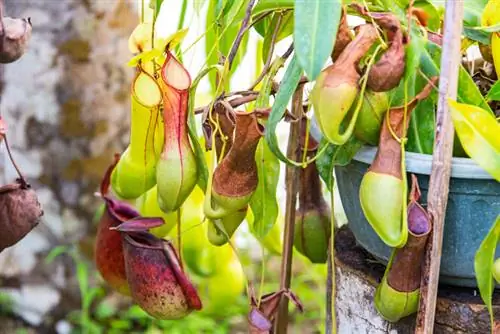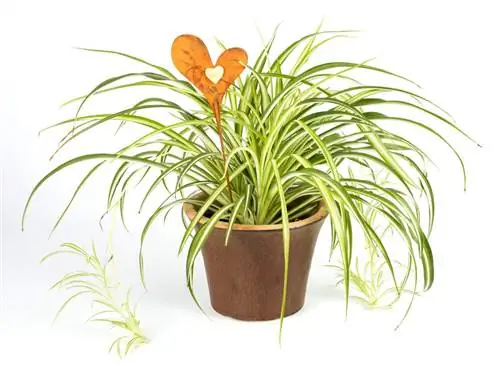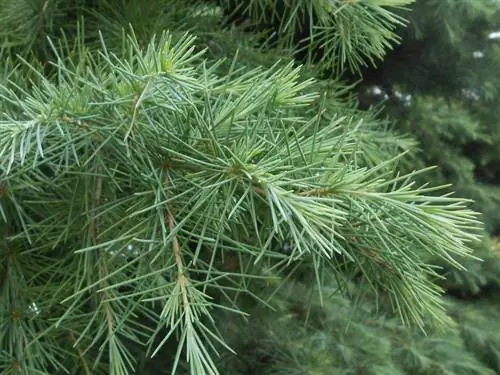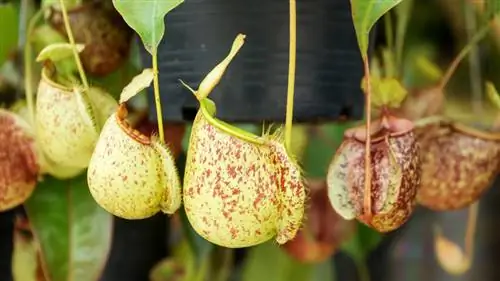- Author admin [email protected].
- Public 2023-12-16 16:46.
- Last modified 2025-01-23 11:20.
In general, it is not necessary to prune a pitcher plant. If you have enough space for the plant to spread, you don't need to use a knife. If you still want to cut Nepenthes, that's no problem. Pitcher plants tolerate pruning well and sprout quickly.
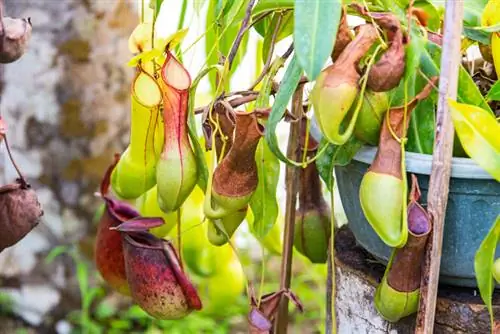
When and how should you prune a pitcher plant?
Pruning a pitcher plant is usually not necessary, but can be done for long shoots, dried out pitchers or for propagation. Make sure that the plant tolerates pruning well and use gentle pruning methods.
The pitcher plant tolerates pruning well
Even if pruning is not necessary for the pitcher plant, it cannot always be avoided to shape the plant or remove dried shoots.
Nepenthes tolerates pruning well. Even if the plant is cut back heavily, it will sprout again under favorable location and care conditions. After a vigorous pruning, it often grows much more compact.
When is cutting Nepenthes necessary?
Pitcher plants sometimes tend to develop very long, thin shoots. However, there are no new shoots. In such cases it may make sense to cut the plant. This stimulates the formation of new shoots. New branches also emerge at the interfaces, so that the pitcher plant appears bushier overall.
Reasons to cut Nepenthes:
- Shortening the shoots
- Shape the plant
- cutting dry cans
- Cut cuttings for propagation
Cutting dried-out cans
If the pitchers of the Nepenthes dry up, it is usually a completely natural process. Depending on the species and husbandry, it takes a few weeks to a year for the pitchers to die. Occasionally they dry out prematurely because the liquid they contain has been spilled out.
Of course you can cut off the dried cans. But wait until they are completely dry before cutting. As long as there is still residual moisture in it, the plant can get nutrients from the old pot.
Only the dry pot itself is cut. The leaf itself remains standing.
Cut cuttings
Pitcher plants are quite easy to propagate yourself if you take cuttings in the summer. To do this, choose shoot tips that are between 10 and 15 centimeters long.
The cuttings (€8.00 on Amazon) are placed in prepared cultivation pots. They root quickly in a bright, warm location. To do this, the substrate must be kept moist.
Tip
Experienced gardeners coat the cut edges of the pitcher plant with cinnamon powder after cutting. Cinnamon kills bacteria and prevents the shoots from rotting.

